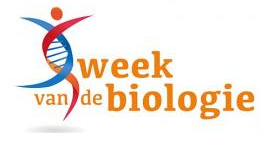
Luis Salome Abarca about plant chemicals and the Hortus botanicus
What chemicals do plants have available, and what happens if they use them when faced with bacteria or fungi? That is what PhD candidate Luis Salomé Abarca is keen to learn. He studies plants’ survival and their use of chemical components in communication and defence. Salomé Abarca works at the Natural Products Laboratory at the Institute of Biology Leiden, but the Hortus botanicus in Leiden is indispensable for his research.

From 30 September to 6 October 2019 it is Biology Week throughout the Netherlands. In this context we highlight a few of our scientists at the Institute of Biology Leiden who have a remarkable collaboration with a research partner in Leiden.
In what way do you collaborate with the Hortus botanicus?
‘For my natural products research I use samples of plants which I get from the Hortus botanicus. These samples are already classified and kept under controlled conditions. That is very important because the samples are the starting reference materials for our systematic approach. Once the samples are at the biology institute, we process them for chemical characterisation. This leads to another collaboration with the Hortus botanicus; students at the Hortus determine if the chemical composition of analysed species reflects phylogenetic – evolutionary – kinship and similar biological activity in related species.’
Now is Biology Week in the Netherlands; what fascinates you about biology?
‘What I like the most is the multidisciplinary character of biology. In order to unravel a biological process in nature, we need to start from simple observation and go through chemistry, biochemistry, molecular biology and so on. For me, this is the opportunity to interact with scientists from diverse areas and different perspectives. I think this also helps me grow as a person.’
What made you decide to study and to do research in biology?
‘I always liked natural sciences since I was a child, especially plants grabbed my attention. Their lack of displacement and the movement of some plants like the sensitive plant Mimosa pudica made me think they should be more than just entities standing there and drinking water. I started to learn about their chemistry and communication. Their communication based on chemical messages released through air or soil made me want to learn more about it. When I arrived at the Natural Products Laboratory in Leiden in 2015, their slogan Learning from nature, learning from our ancestors made me feel I was in the right place to continue learning about plant chemical behaviour.’

Images by Luis Salomé Abarca
